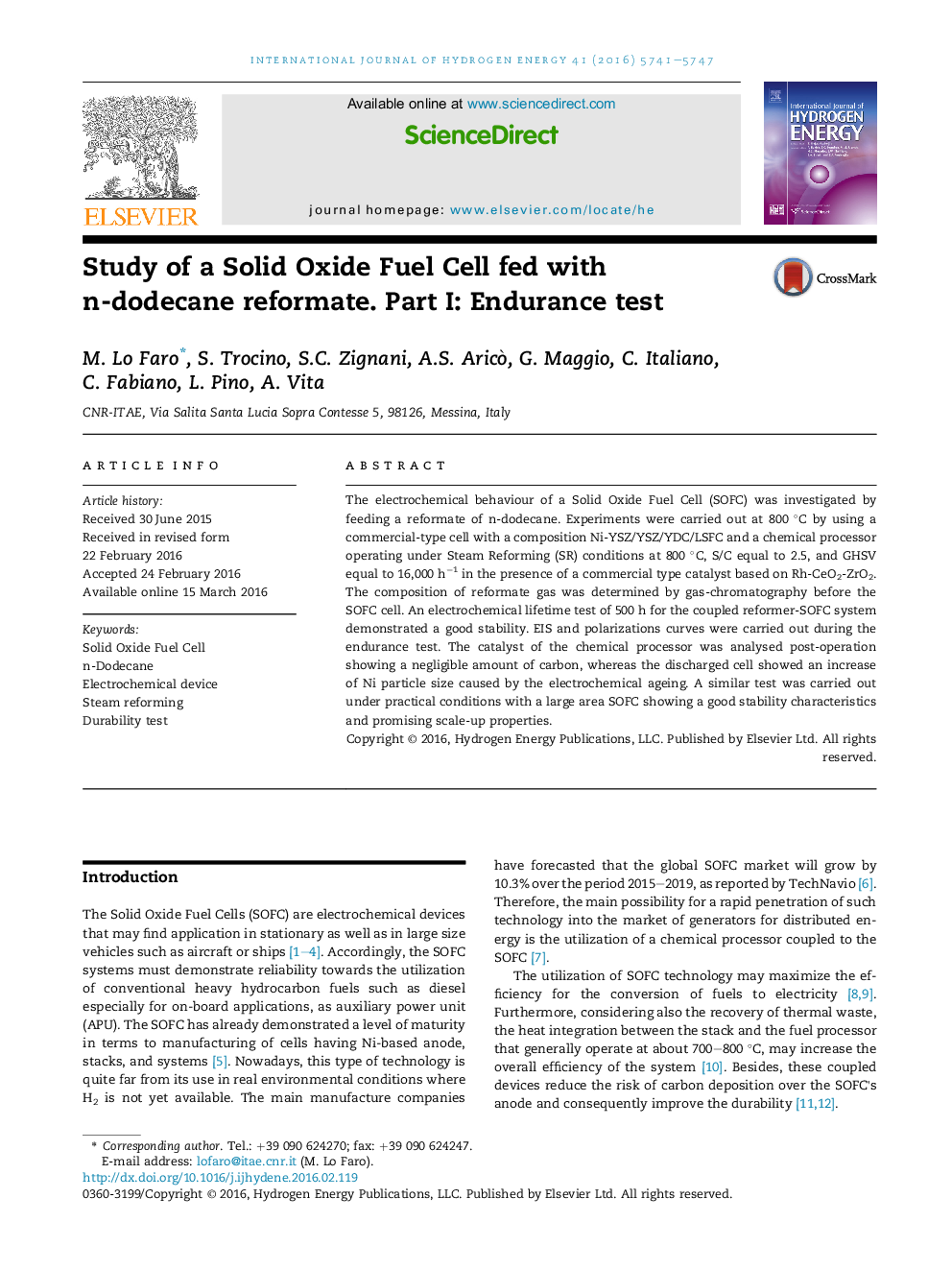| Article ID | Journal | Published Year | Pages | File Type |
|---|---|---|---|---|
| 1277687 | International Journal of Hydrogen Energy | 2016 | 7 Pages |
•An endurance test demonstrated stability for a SOFC fed with of n-dodecane reformate.•The electrochemical ageing observed for the SOFC was studied by EIS.•Tests on button and large area cells confirmed the feasibility of the reformer-SOFC system.•The compactness of the cathode caused diffuse constraints at high current density.
The electrochemical behaviour of a Solid Oxide Fuel Cell (SOFC) was investigated by feeding a reformate of n-dodecane. Experiments were carried out at 800 °C by using a commercial-type cell with a composition Ni-YSZ/YSZ/YDC/LSFC and a chemical processor operating under Steam Reforming (SR) conditions at 800 °C, S/C equal to 2.5, and GHSV equal to 16,000 h−1 in the presence of a commercial type catalyst based on Rh-CeO2-ZrO2. The composition of reformate gas was determined by gas-chromatography before the SOFC cell. An electrochemical lifetime test of 500 h for the coupled reformer-SOFC system demonstrated a good stability. EIS and polarizations curves were carried out during the endurance test. The catalyst of the chemical processor was analysed post-operation showing a negligible amount of carbon, whereas the discharged cell showed an increase of Ni particle size caused by the electrochemical ageing. A similar test was carried out under practical conditions with a large area SOFC showing a good stability characteristics and promising scale-up properties.
